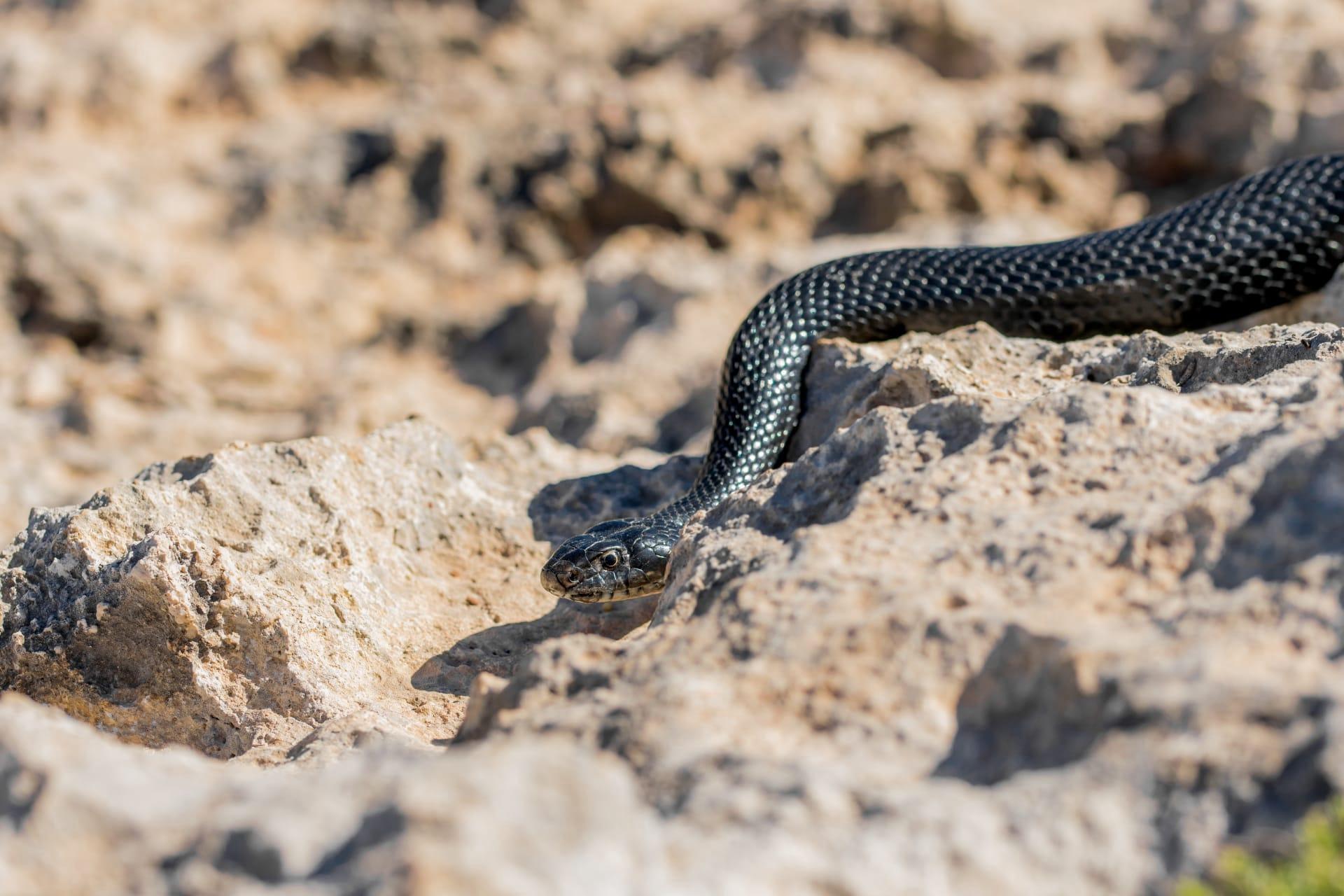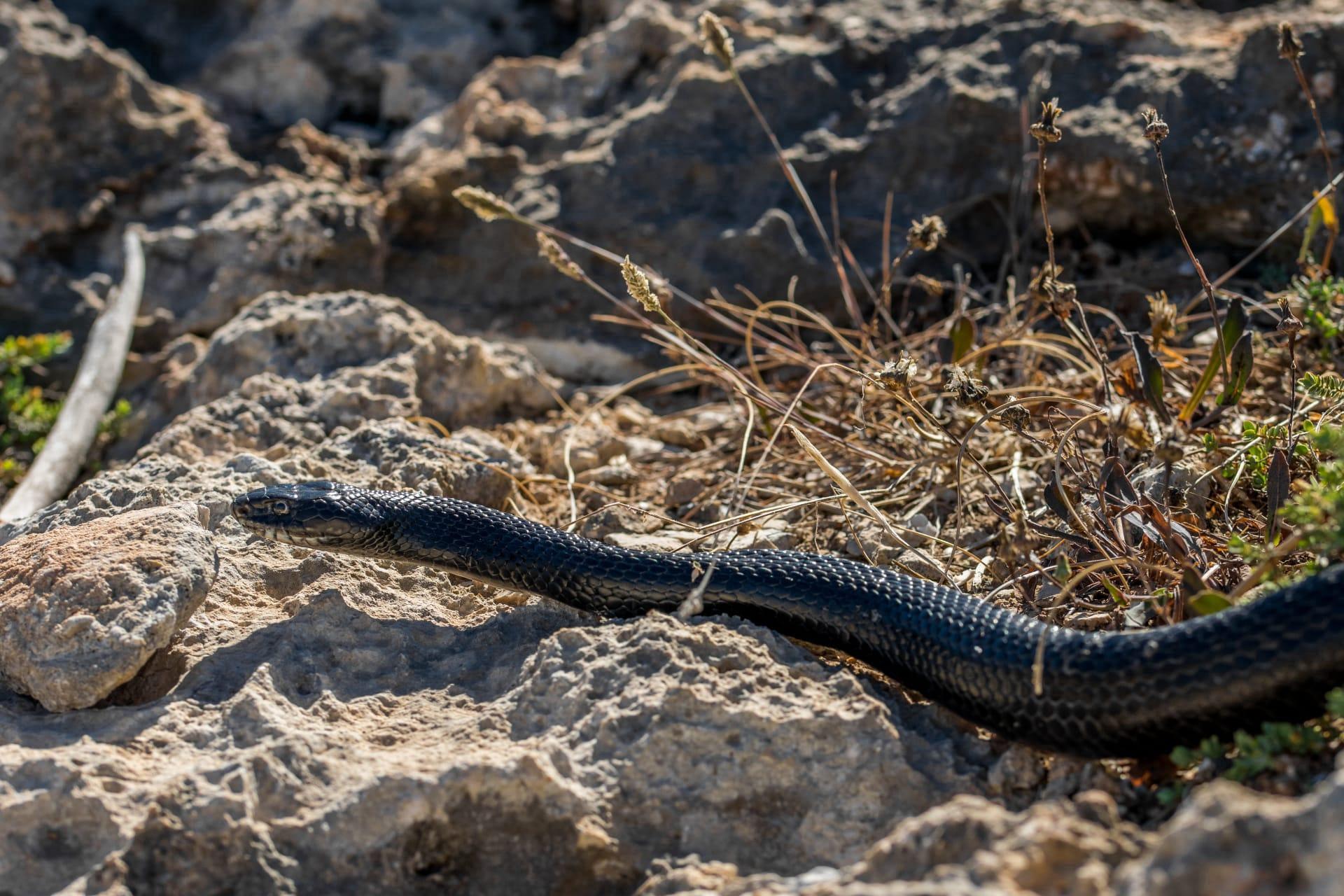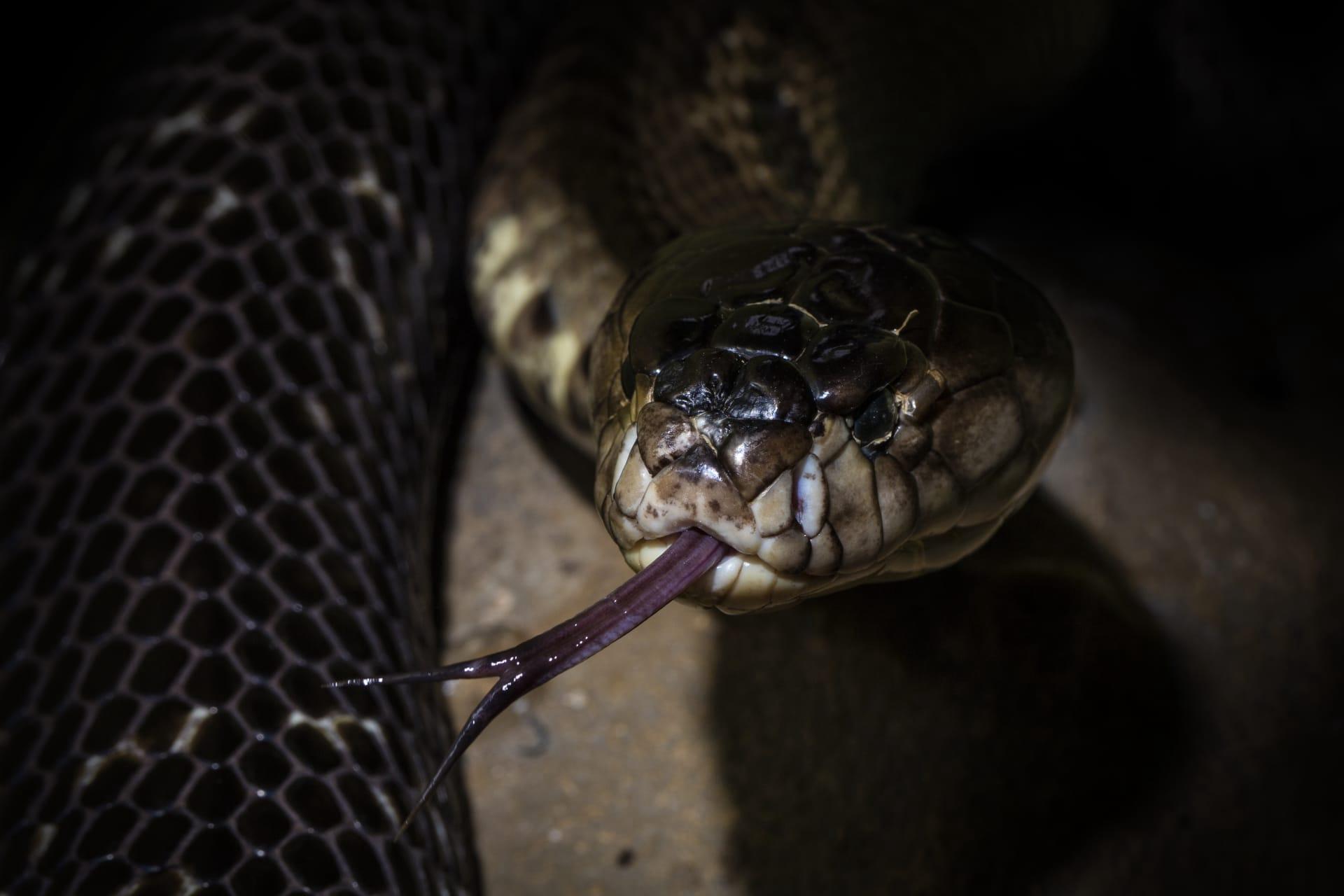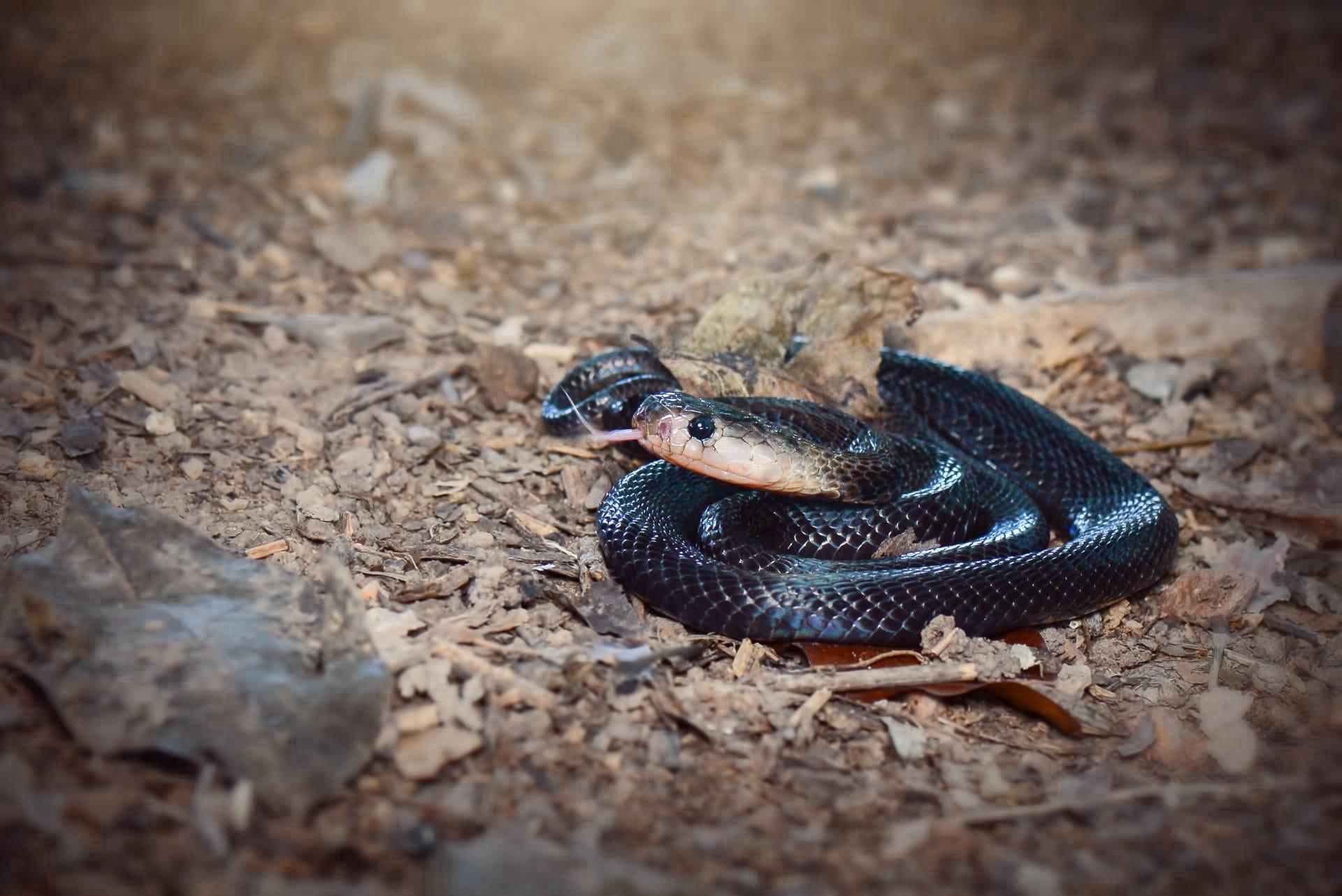Black Rat Snake
- Home /
- Mini Encyclopedia /
- Animal /
- Black Rat Snake
1
The Black Rat Snake, scientifically known as Pantherophis obsoletus, belongs to the Colubridae family, a large family of non-venomous snakes. This species is a part of the genus Pantherophis and is closely related to other North American rat snakes. Distinguished by its black, glossy scales and white or cream-colored underbelly, the Black Rat Snake presents a striking contrast in appearance. Its physical characteristics, such as a strong, muscular body, can reach lengths of up to 6 feet, making it one of the longest snakes in North America.
Native to a vast region of the United States, the Black Rat Snake is primarily found in the central and eastern parts. Its habitat stretches from New England down to Florida, and westward to parts of Nebraska and Texas. Preferring wooded hillsides, rocky outcrops, and abandoned buildings, these snakes have adapted to a variety of environments. Their presence is significant in states like Ohio, Pennsylvania, and Maryland, where they are often spotted in both rural and suburban areas. The adaptability to different climates and terrains contributes to their widespread distribution across these regions.

2
Question: Are Black Rat Snakes dangerous to humans?
Answer: Contrary to popular belief, Black Rat Snakes pose little to no threat to humans. They are non-venomous and typically avoid human contact. When threatened, their primary defense is to remain motionless or flee. In some cases, they may exhibit defensive behaviors such as hissing or coiling, but they rarely bite. It's important to note that while they are harmless to humans, they are often mistaken for more dangerous species due to their size and coloration. Educating the public about the harmless nature of Black Rat Snakes is crucial in preventing unnecessary fear and ensuring their protection.

3
The Black Rat Snake employs a variety of survival strategies. One key tactic is their ability to climb trees adeptly, which aids in hunting birds and their eggs, a significant part of their diet. They are also excellent swimmers, enabling them to escape predators and explore different habitats. In terms of feeding, they primarily prey on rodents, birds, and bird eggs, using constriction to subdue their prey. This method of hunting not only showcases their physical strength but also aids in controlling rodent populations in their habitats.
Regarding their life cycle, Black Rat Snakes are oviparous, laying clutches of 12-20 eggs, typically in June or July. The eggs are laid in warm, moist environments like compost piles or decaying logs, and hatch after about two months. The young are independent from birth and receive no parental care. These snakes have a long lifespan, often living up to 15-20 years in the wild, and sometimes even longer in captivity.

4
In the ecosystem, Black Rat Snakes play a vital role in controlling rodent populations. By preying on mice, rats, and other small mammals, they help maintain a balance in the ecosystem and prevent overpopulation of these species. This not only benefits agricultural areas by reducing crop damage but also aids in controlling the spread of diseases carried by rodents.
Additionally, Black Rat Snakes are a key prey species for larger predators such as hawks, owls, and foxes. Their presence contributes to the biodiversity and health of their ecosystems. They also indirectly assist in seed dispersal and forest regeneration by preying on rodents that consume seeds and young plants. Thus, their role extends beyond predator-prey dynamics, impacting broader ecological processes.

5
Film: "Secrets of the Snake Charmer: Black Rat Snakes" is a documentary produced in the United States in 2018. This film explores the mysterious world of Black Rat Snakes, delving into their behaviors, habitats, and the myths surrounding them. It highlights the snake's role in the ecosystem and addresses common misconceptions about its nature.
Book: "North American Snakes: A Natural History," authored by James R. Dixon, was published in the United States in 2016. This comprehensive guide includes a detailed section on Black Rat Snakes, covering their biology, behavior, and habitat. Dixon's work is recognized for its scientific accuracy and accessibility to both experts and enthusiasts.
Book: "Serpents in the Garden: Encounters with North American Snakes," written by Liam O'Brien and published in the USA in 2019, includes a chapter on Black Rat Snakes. The book provides insights into the life of these snakes and their interactions with humans. O'Brien's narrative combines scientific information with engaging storytelling, making it an informative and enjoyable read.